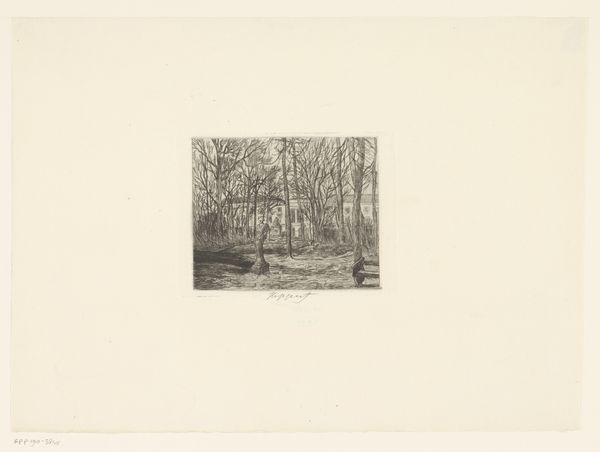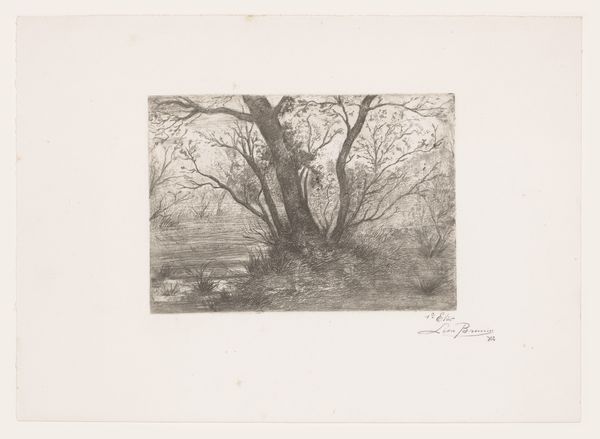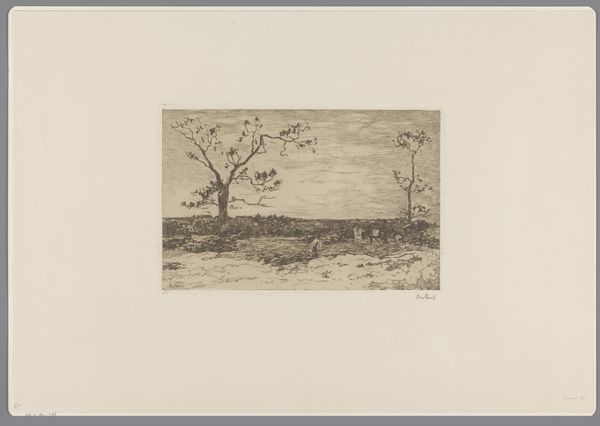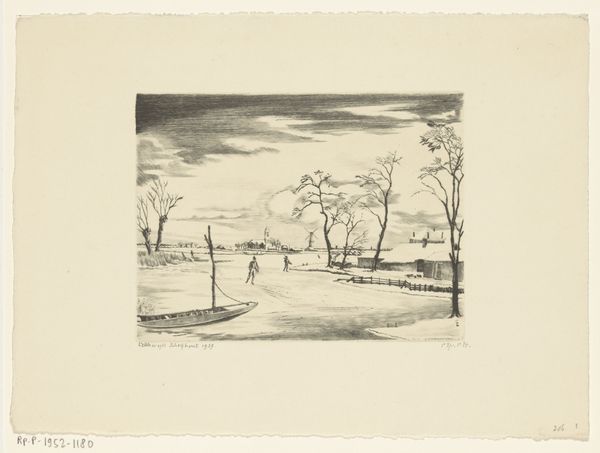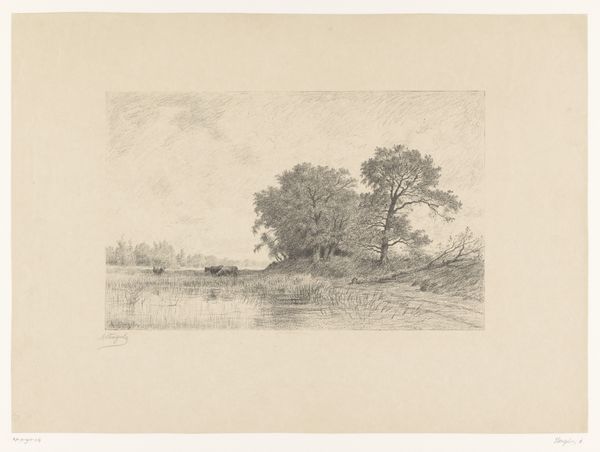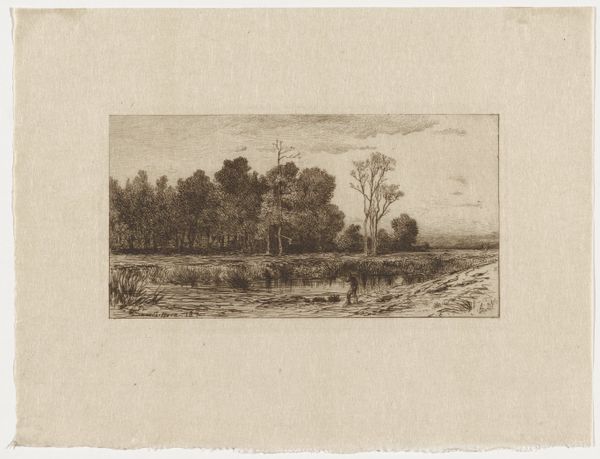
print, etching, paper
# print
#
impressionism
#
etching
#
landscape
#
paper
Dimensions: height 160 mm, width 240 mm
Copyright: Rijks Museum: Open Domain
Editor: This is James Ensor's "Boomrijk landschap met toren," a landscape etching from 1886. I find it rather muted and almost melancholic. What aspects of this work particularly stand out to you? Curator: For me, the immediate fascination lies in understanding how Ensor chose etching – a relatively accessible printmaking method – to depict this landscape. What socio-economic factors allowed for wider consumption and distribution of this artwork via printed paper? Editor: I hadn't thought about the means of distribution. Is the choice of etching inherently connected to reaching a broader audience at that time? Curator: Precisely. Etching offered a cheaper and more reproducible way of disseminating imagery compared to unique paintings. It democratizes art by turning it into a consumable commodity. Consider the paper itself – what kind is it? Where might it have been sourced and by whom? Even the ink tells a story of available materials. Editor: That shifts my understanding completely. I was focusing on the trees and the tower, the implied scene. Curator: While the represented scene is relevant, a materialist reading also probes how labor factored into the production of the plate, the inking process, and ultimately the availability and accessibility of the finished product to different social classes. Was this intended for wealthy art collectors, or a middle-class seeking affordable decoration? Editor: So, thinking about the work includes considering it as a product shaped by material realities and the available labor forces of the time. Curator: Exactly. Ensor’s “Boomrijk landschap met toren” is not simply a view, but also a window onto the world of production and consumption of art in 1886. What does the repeatable aspect of this image and others allow the common person to enjoy fine art that wouldn't otherwise be enjoyed. Editor: Thanks, I now understand a new lens for approaching this print and artworks, not just from the aesthetic but the practical.
Comments
No comments
Be the first to comment and join the conversation on the ultimate creative platform.



